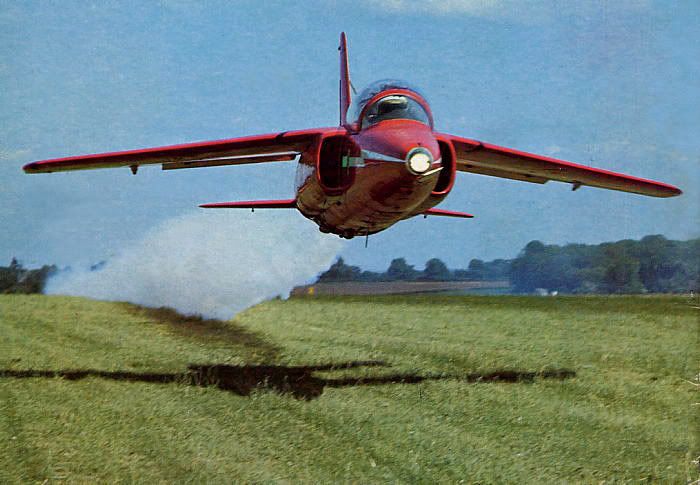Post amazingly cool pictures of aircraft (Volume 1)
Discussion
dr_gn said:
perdu said:
SMKurt said:
IforB said:
Was this taken yesterday, in my back garden? 'Cause yesterday, i was having a nice sleep in when 'wwwwhhhhoOOOOOCCCCCCCHHHHHHHHHHHH!' one of them flew over making me fly out of bed! Buggers! Any ideas what they where doing at Teeside/Durham Tees Vally airport?or was it a Red Arrow, in a Hawk
I'd love to have a Gnat come whistlng over my garden, pretty rare these days I think
but the Arrows do displays in all sorts of places, short "shows" where invited often if returning from other events, so I understand. Could have been one of those affairs
Yup
they can come and wake me up too
but I would really love to see a Gnat again, in flight.
Anyone know who operates any these days?
http://www.bbc.co.uk/dorset/content/articles/2008/...

http://www.vectorsite.net/avgnat.html
dr_gn said:
Eric Mc said:
You couldn't get a better example of the different approaches to engineering as carried out by the Americans compared to the Russians.
The Bear is a lineal descendant of a reverse engineered Boeing product.
The B-52 IS a Boeing product, but owes precious little to the B-29.
The Americans tend to throw old technology away and start afresh each time. The Russians tweak old and reliable technology on an ongoing basis.
I'd disagree with that Eric: Seems to me like a very progressive design evolution from, say B-29 to B-52 (you could easily go further back than the B-29 with this timeline):The Bear is a lineal descendant of a reverse engineered Boeing product.
The B-52 IS a Boeing product, but owes precious little to the B-29.
The Americans tend to throw old technology away and start afresh each time. The Russians tweak old and reliable technology on an ongoing basis.
1942 Boeing B-29 - Straight Wing, 4 Piston Engines.
1945 Boeing B-50 - More powerful version of above with detail changes.
1946 Convair B-36 - Shallow Swept Wing, 6 Piston Engines, 4 Jet Engines.
1947 Boeing B-47 - True Swept Wing, 6 Jet Engines.
1952 Boeing B-52 - True Swept Wing, 8 Jet Engines.
Progressive performance increase also. These examples don't even include the myriad development aircraft that never made service. Dates are approximate first flights, development obviously started several years before.
Similarly with the USSR (approx 1946 - 52):
The Tu-4 (B-29 copy)
Tu-80
Tu-85
Tu-16 "Badger"
not to mention the Myasishchev projects which led to the "Bison",
then the Tu-95 "Bear"
Way more development increments than the Americans for the same time period.
I'd say that the Tu-95 and B-52 are both almost as different from the B-29. The props are an obvious similarity (but driven by gas turbines rather than piston engines don't forget), but that's about it. The Badger and Bison have jet engines, but predate the Tu-95, so it's not as if the Russians hadn't got the technology for jet bombers - perhaps not as well developed, but 'bear' in mind the Bison had similar performance to the B-52 in terms of speed...
Cheers,
Edited by dr_gn on Friday 24th July 23:05
If you look at the B-29/Tu-4/Tu-95 you can see the distinct family lineage. The Tu-95 retains the same fuselage shape and cross section as the Tu-4/B-29.
I'm not saying that Boeing didn't develop the B-29 - the B-50 (as you say) and the 377/C-97 series were direct descendants of the basic B-29. However, when Boeing developed their 707 airliner, they eventually rejected any developments of the 377 Stratocruiser completely and built the 707, The Russians, on the other hand, used major components of their Tu-95 in the Tu-144.
I think that it is well knmown (i.e. not just my opinion)that the Russians are more conservative in their engineering.
Another example of this is their continued useage of the R-7 rocket for most of their space launches - a design going back to 1951.
Eric Mc said:
dr_gn said:
Eric Mc said:
You couldn't get a better example of the different approaches to engineering as carried out by the Americans compared to the Russians.
The Bear is a lineal descendant of a reverse engineered Boeing product.
The B-52 IS a Boeing product, but owes precious little to the B-29.
The Americans tend to throw old technology away and start afresh each time. The Russians tweak old and reliable technology on an ongoing basis.
I'd disagree with that Eric: Seems to me like a very progressive design evolution from, say B-29 to B-52 (you could easily go further back than the B-29 with this timeline):The Bear is a lineal descendant of a reverse engineered Boeing product.
The B-52 IS a Boeing product, but owes precious little to the B-29.
The Americans tend to throw old technology away and start afresh each time. The Russians tweak old and reliable technology on an ongoing basis.
1942 Boeing B-29 - Straight Wing, 4 Piston Engines.
1945 Boeing B-50 - More powerful version of above with detail changes.
1946 Convair B-36 - Shallow Swept Wing, 6 Piston Engines, 4 Jet Engines.
1947 Boeing B-47 - True Swept Wing, 6 Jet Engines.
1952 Boeing B-52 - True Swept Wing, 8 Jet Engines.
Progressive performance increase also. These examples don't even include the myriad development aircraft that never made service. Dates are approximate first flights, development obviously started several years before.
Similarly with the USSR (approx 1946 - 52):
The Tu-4 (B-29 copy)
Tu-80
Tu-85
Tu-16 "Badger"
not to mention the Myasishchev projects which led to the "Bison",
then the Tu-95 "Bear"
Way more development increments than the Americans for the same time period.
I'd say that the Tu-95 and B-52 are both almost as different from the B-29. The props are an obvious similarity (but driven by gas turbines rather than piston engines don't forget), but that's about it. The Badger and Bison have jet engines, but predate the Tu-95, so it's not as if the Russians hadn't got the technology for jet bombers - perhaps not as well developed, but 'bear' in mind the Bison had similar performance to the B-52 in terms of speed...
Cheers,
Edited by dr_gn on Friday 24th July 23:05
If you look at the B-29/Tu-4/Tu-95 you can see the distinct family lineage. The Tu-95 retains the same fuselage shape and cross section as the Tu-4/B-29.
I doubt very much whether the Tu-95 shares any common components with the Tu-4 either. As for fuselage shape, well...they're all basically tubes of one section or another, I can't see a particular significance of fuselage shape in this case.
You said "The Americans tend to throw old technology away and start afresh each time": In the aircraft sequence I outlined I can't realy see a particular step change in design. I'd define a step change in design as, for example the Hawker Hunter to the Hawker P.1127/Harrier: totally different consecutive designs from the same company.
Cheers,
The B-47 was probably one of the most revolutionary aircraft ever devised. I would argue that it perhaps the most important aircraft of all time - especially in the field of large jet bomber and transport design. It bore absolutely no relationship to any of Boeing's previous aircraft.
The B-52 shared some of its features - but then again, most jet transport aircraft today share these concepts too.
However, metal for metal, there isn't much commonality between a Boeing B-47 and a B-52.
Technology advances through two routes, evolution and revolution. I will still argue that the Russians preferred evolutionary changes to revolutionary ones.
I don't think there is much point in continuing the debate to be honest - you have your opinions, I have mine - although I have to say that I have gleaned mmy opinions from comments I have read or heard from more knowledgeable aviation and spaceflight historians than me.
The B-52 shared some of its features - but then again, most jet transport aircraft today share these concepts too.
However, metal for metal, there isn't much commonality between a Boeing B-47 and a B-52.
Technology advances through two routes, evolution and revolution. I will still argue that the Russians preferred evolutionary changes to revolutionary ones.
I don't think there is much point in continuing the debate to be honest - you have your opinions, I have mine - although I have to say that I have gleaned mmy opinions from comments I have read or heard from more knowledgeable aviation and spaceflight historians than me.
Eric Mc said:
The B-47 was probably one of the most revolutionary aircraft ever devised. I would argue that it perhaps the most important aircraft of all time - especially in the field of large jet bomber and transport design.
I really cant see how it was very revolutionary?Was ahead of its time, very graceful looking, and had quite a few unusual features, but I struggle to think of how it revolutionised anything?
Mr Dave said:
Eric Mc said:
The B-47 was probably one of the most revolutionary aircraft ever devised. I would argue that it perhaps the most important aircraft of all time - especially in the field of large jet bomber and transport design.
I really cant see how it was very revolutionary?Was ahead of its time, very graceful looking, and had quite a few unusual features, but I struggle to think of how it revolutionised anything?
Mr Dave said:
Eric Mc said:
The B-47 was probably one of the most revolutionary aircraft ever devised. I would argue that it perhaps the most important aircraft of all time - especially in the field of large jet bomber and transport design.
I really cant see how it was very revolutionary?Was ahead of its time, very graceful looking, and had quite a few unusual features, but I struggle to think of how it revolutionised anything?
This method of wing designand construction and engine mounting is now followed on most airliner designs - but it was first used on the B-47.
As for the B-29 and B-47 having similar fuselages - judge for yourself -


Actually, there is some similarity in the side elevation view. But, it was the wings that made the B-47 special.
Edited by Eric Mc on Sunday 26th July 20:11
OK, but take a look at the profiles and, more importantly, planforms of my original post on this, from B29 to B-52 and tell me that there isn't a gradual evolution rather than a 'step change':
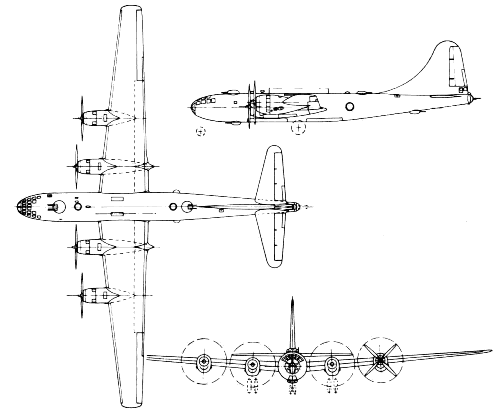
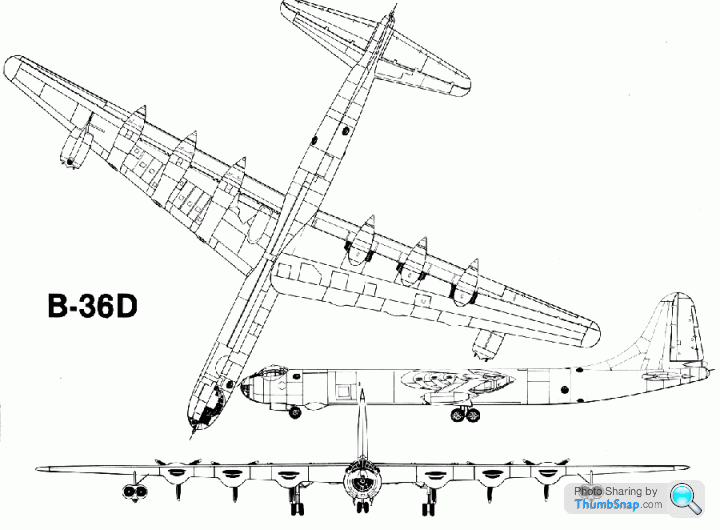
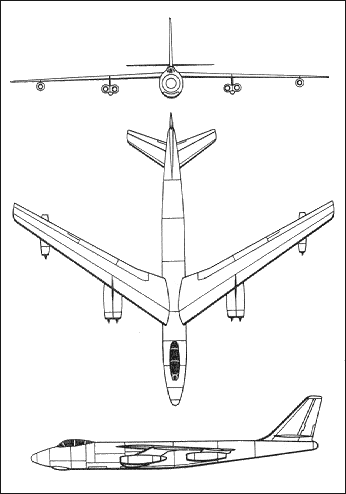
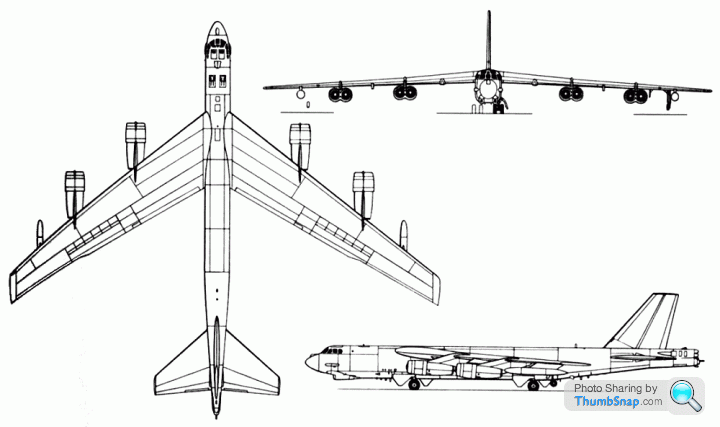
Since we're talking fuselages, look at the glazed front fuselage of the B-29 followed by the glazed front and additional upper cockpit of the B-36 (with an almost identical fin/rudder profile to the B-29) followed by the upper cockpit only of the B-47 and built in sdevelopment of the B-52. Then look at the wing planforms from straight (B-29), mild sweep (B-36) to full sweep (B-47 & 52). Same with engines: it's a beautiful illustration of evolution.
Now look at the USSR:
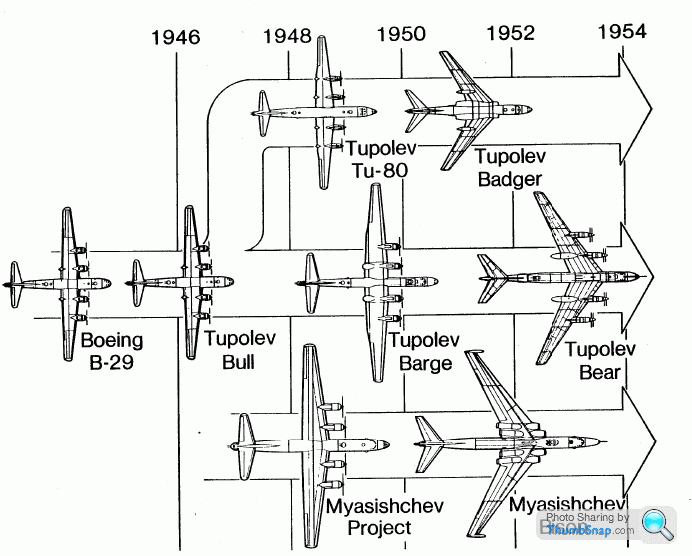
If you ignore the Tu-85 'Barge' (which never went into production), I could easily argue that the Russians were the ones making step changes in design - look at the suden change from straight wings to highly swept wings, and the incorporation of jet engines, then to the turboprops of the tu-95.
I think you're right Eric, about the Americans willing to put new things into production, but I think better examples would have been variable wing geometry, hybrid engines (specifically the SR-71) and stealth. There may also be an issue of semantics: by 'development' I tend to think of pure, or conceptual design rather than what actually saw service. The post war developments of the B-29 concept never got further than tunnel models as far as I know.
I think you could also just about argue that the first jet aircraft to use underslung engines was the Me262, which influenced, for one reason or another, many aircraft of the immediate post war period including the above bombers.
Cheers,




Since we're talking fuselages, look at the glazed front fuselage of the B-29 followed by the glazed front and additional upper cockpit of the B-36 (with an almost identical fin/rudder profile to the B-29) followed by the upper cockpit only of the B-47 and built in sdevelopment of the B-52. Then look at the wing planforms from straight (B-29), mild sweep (B-36) to full sweep (B-47 & 52). Same with engines: it's a beautiful illustration of evolution.
Now look at the USSR:

If you ignore the Tu-85 'Barge' (which never went into production), I could easily argue that the Russians were the ones making step changes in design - look at the suden change from straight wings to highly swept wings, and the incorporation of jet engines, then to the turboprops of the tu-95.
I think you're right Eric, about the Americans willing to put new things into production, but I think better examples would have been variable wing geometry, hybrid engines (specifically the SR-71) and stealth. There may also be an issue of semantics: by 'development' I tend to think of pure, or conceptual design rather than what actually saw service. The post war developments of the B-29 concept never got further than tunnel models as far as I know.
I think you could also just about argue that the first jet aircraft to use underslung engines was the Me262, which influenced, for one reason or another, many aircraft of the immediate post war period including the above bombers.
Cheers,
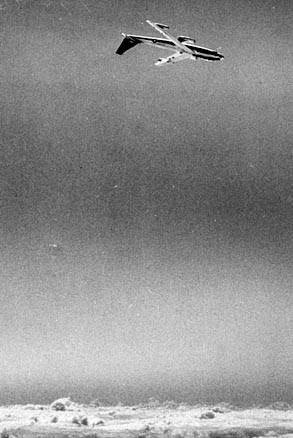
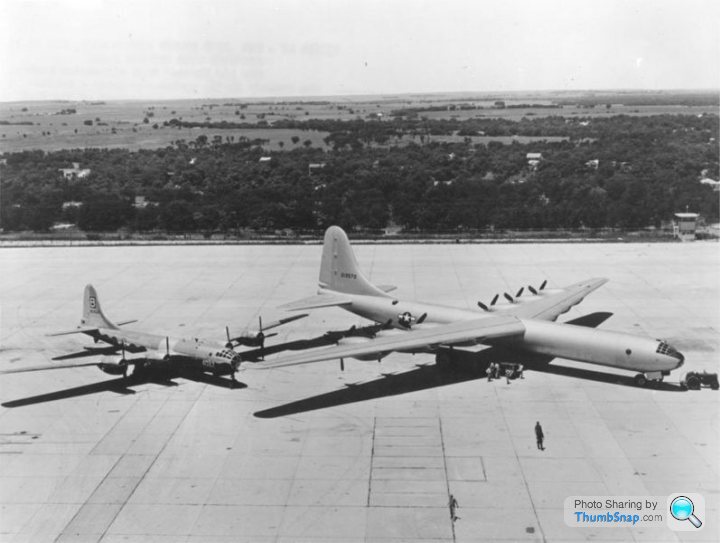
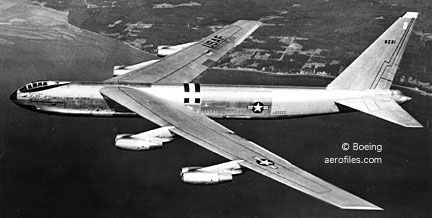
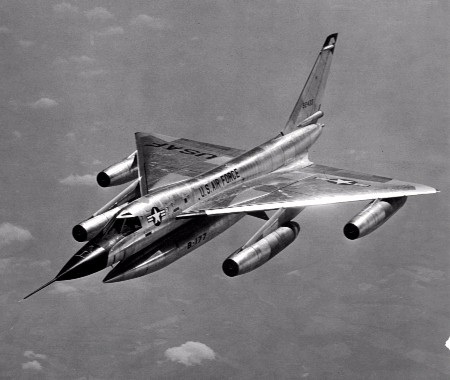
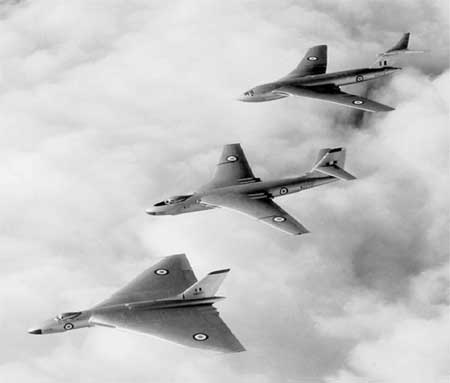
Some more pictures of late 40's and 50's era bombers. Think the Hustler and the Victor must have been very futuristic looking when they first appeared. Would love to see a B-36 (but what else is there to see in Ohio?), beside the B-29 it really shows just how big it must be, it had 336 spark plugs as well. And sorties of well over 24 hours were not uncommon.
Its strange how all of the V bombers and the Russian jets had wing root mounted engines, ok they had advantages over wing mounted engines in terms of drag, but surely if there was that much of an advantage in nacelle mounted engines the others would have used them? (ok the M-50 Bounder did but that was about it) The Shorts sperrin had a weird engine layout so we will ignore that one.

Planes designed before 1970 were so much cooler.
Hows about this:
Arado Ar234
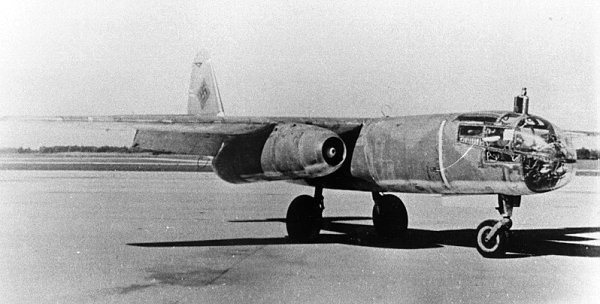
Shoulder mounted wing : Check.
Thin wing section with high-ish aspect ratio : Check.
Underslung jet engines : Check.
Fuselage mounted undercarriage : Check.
It's not a million miles from the B-47.
First flight? 1943. In terms of technology it makes the much later B-36 look antiquated in comparison.
Arado Ar234

Shoulder mounted wing : Check.
Thin wing section with high-ish aspect ratio : Check.
Underslung jet engines : Check.
Fuselage mounted undercarriage : Check.
It's not a million miles from the B-47.
First flight? 1943. In terms of technology it makes the much later B-36 look antiquated in comparison.
I would suggest that the first jet with underslung engines was, in fact, the Heinkel He280.

However, with the possible exception of the Ju287, these early jets had underslung engines because that was a logical place to put jet engines in a twin engined design. The Meteor would have had underslung engines if the Whittle design hadn't got such a large cross section due to the centrifugal compressor layout. In fact, at least one Meteor WAS fitted with proper underslung engines - the Metrovick powered Meteor F2/40. Because the Metrovick engine was an axial flow engine, it had a smaller diameter than the Whittle designs and allowed the engines to be placed in a more logical position
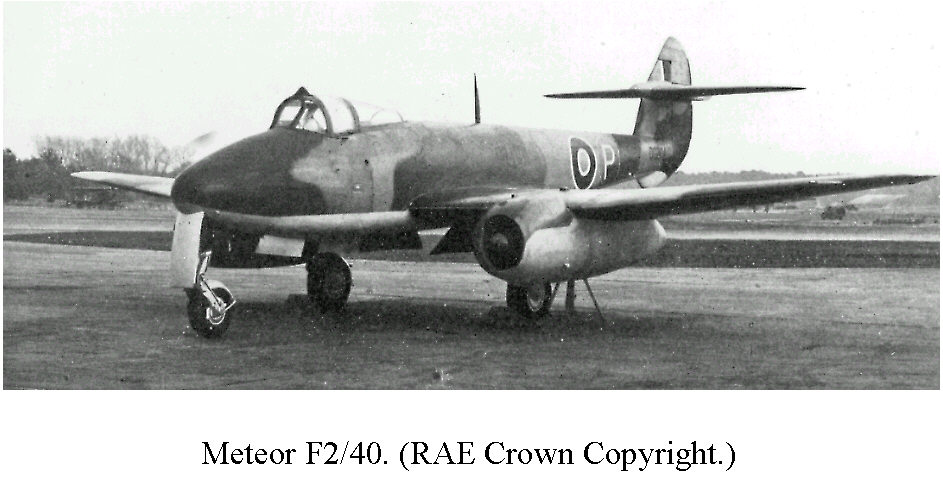 .
.
Hopwever, you are all missing the point I am making about the B-47. It is not JUST that it had underslung engines - it is the combination of the highly sweptback wing, the thin aerofoil cross section of the wing and the location of the underslung engines on projecting pylons ahead of the leading edge of the wing.
Boeing were using the underslung engines to perform a structural weight saving role which, with the possible exception of the Ju287, was not the motivation of all those other designers putting engines under the wing.
As I said earlier, I am not forming this opinion from my own thoughts on this. I am not that clever. I have read extensively on the history of the jet airliner and all histories of this nature I have read firmly state that the layout of the Boeing B-47 was very iunfluential to the designers of later jet transports and airliners. However, Boeing did not advertise the advantages they were getting from their pylon mounted designs - why should they pass on this information to their commetrcial rivals and possible foreign enemies?
It was only in the 1960s that the design advantages offered by the Boeing layout became clearly obvious to everyone else.
By the 1980s, nearly all larger transport jet designs had firmly switched to this layout.
It seems to me that the only time alternative layouts are now used is when the aircraft is small, as in a jet fighter or biz jet, where there is not enough space to sling a set of engines under the wing or other critera (such as the fitting of afterburners) makes an underslung pylon mounted engine less attractive (although that didn't stop Convair with their B-58 putting their engines under the wing).

However, with the possible exception of the Ju287, these early jets had underslung engines because that was a logical place to put jet engines in a twin engined design. The Meteor would have had underslung engines if the Whittle design hadn't got such a large cross section due to the centrifugal compressor layout. In fact, at least one Meteor WAS fitted with proper underslung engines - the Metrovick powered Meteor F2/40. Because the Metrovick engine was an axial flow engine, it had a smaller diameter than the Whittle designs and allowed the engines to be placed in a more logical position
 .
.Hopwever, you are all missing the point I am making about the B-47. It is not JUST that it had underslung engines - it is the combination of the highly sweptback wing, the thin aerofoil cross section of the wing and the location of the underslung engines on projecting pylons ahead of the leading edge of the wing.
Boeing were using the underslung engines to perform a structural weight saving role which, with the possible exception of the Ju287, was not the motivation of all those other designers putting engines under the wing.
As I said earlier, I am not forming this opinion from my own thoughts on this. I am not that clever. I have read extensively on the history of the jet airliner and all histories of this nature I have read firmly state that the layout of the Boeing B-47 was very iunfluential to the designers of later jet transports and airliners. However, Boeing did not advertise the advantages they were getting from their pylon mounted designs - why should they pass on this information to their commetrcial rivals and possible foreign enemies?
It was only in the 1960s that the design advantages offered by the Boeing layout became clearly obvious to everyone else.
By the 1980s, nearly all larger transport jet designs had firmly switched to this layout.
It seems to me that the only time alternative layouts are now used is when the aircraft is small, as in a jet fighter or biz jet, where there is not enough space to sling a set of engines under the wing or other critera (such as the fitting of afterburners) makes an underslung pylon mounted engine less attractive (although that didn't stop Convair with their B-58 putting their engines under the wing).
dr_gn said:
Hows about this:
Arado Ar234

Shoulder mounted wing : Check.
Thin wing section with high-ish aspect ratio : Check.
Underslung jet engines : Check.
Fuselage mounted undercarriage : Check.
It's not a million miles from the B-47.
First flight? 1943. In terms of technology it makes the much later B-36 look antiquated in comparison.
thats a high wing, isnt it?Arado Ar234

Shoulder mounted wing : Check.
Thin wing section with high-ish aspect ratio : Check.
Underslung jet engines : Check.
Fuselage mounted undercarriage : Check.
It's not a million miles from the B-47.
First flight? 1943. In terms of technology it makes the much later B-36 look antiquated in comparison.
hman said:
dr_gn said:
Hows about this:
Arado Ar234

Shoulder mounted wing : Check.
Thin wing section with high-ish aspect ratio : Check.
Underslung jet engines : Check.
Fuselage mounted undercarriage : Check.
It's not a million miles from the B-47.
First flight? 1943. In terms of technology it makes the much later B-36 look antiquated in comparison.
thats a high wing, isnt it?Arado Ar234

Shoulder mounted wing : Check.
Thin wing section with high-ish aspect ratio : Check.
Underslung jet engines : Check.
Fuselage mounted undercarriage : Check.
It's not a million miles from the B-47.
First flight? 1943. In terms of technology it makes the much later B-36 look antiquated in comparison.
"shoulder-wing, the wing is mounted above the fuselage middle"
"high-wing, the wing upper surface is level with or above the top of the fuselage"
Eric Mc said:
It was only in the 1960s that the design advantages offered by the Boeing layout became clearly obvious to everyone else.
I would argue that it was after the 60s when high bypass turbofans were starting to appear prompted the change of layouts from rear to underslung ,rather than there being such an advantage of underslung nacelle mounted engines. There isnt too much of a choice of where to put big diameter turbofans. Only the An72/74 put them anywhere other than under the wings, with an obvious advantage for operations away from runways.Even Boeings 727 which came after the 707 used rear mounted engines, if the Boeing layout was so good why did Boeing move away from it? The reason the 737 had underslung engines was because they couldnt get the rear engined layout to work properly with the shortened 727 fuselage that they used to develop the 737. Which becme useful later on when the noise and lack of efficiency of turbojets bacame such an issue.
Anyway some pictures of the An-72/4, 707,727 and 737.
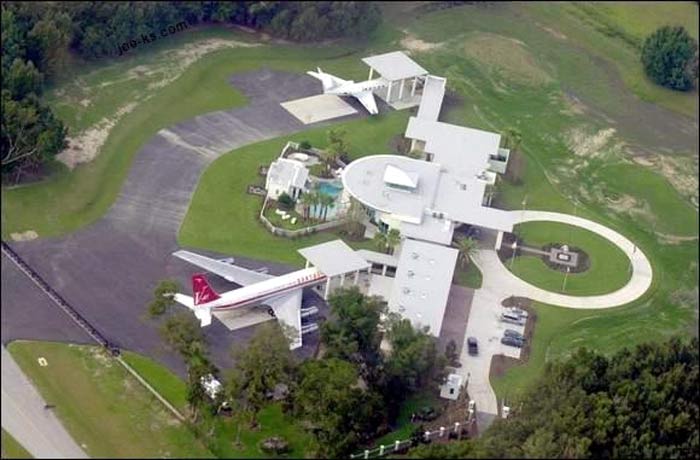
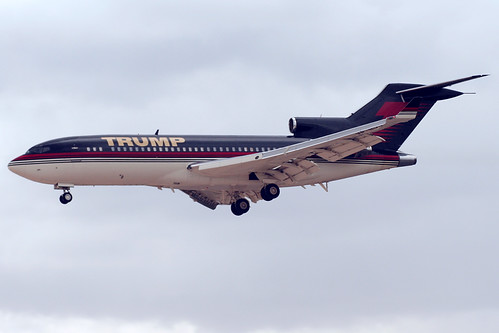
Some people really have too much money.
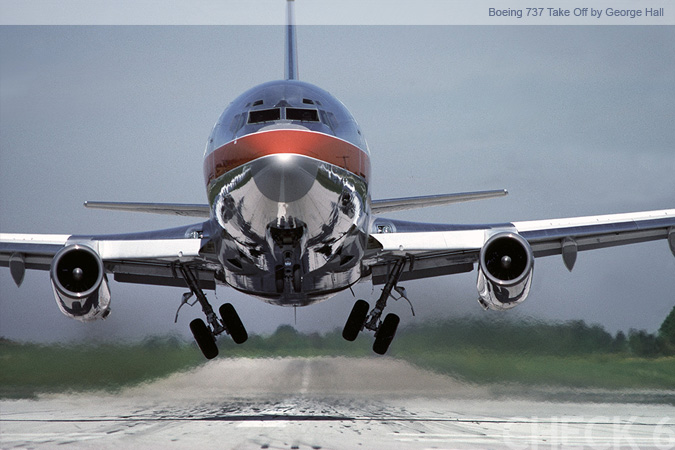

And a picture of a VC10, just because I like turbojet powered rear engined planes. They sounded so much better, produced a lot more smoke and were less boring than the current boring airliners.

In the last two week I have taken half a dozen flights on one of these:

I would imagine that thrust is more effective from a rear-mounted jet as it is pretty much in line with the centre of resistance. A jet mounted under the wing would have a tendency to push the nose high, which I guess has to be compensated for in some way.

I would imagine that thrust is more effective from a rear-mounted jet as it is pretty much in line with the centre of resistance. A jet mounted under the wing would have a tendency to push the nose high, which I guess has to be compensated for in some way.
Ayahuasca said:
I would imagine that thrust is more effective from a rear-mounted jet as it is pretty much in line with the centre of resistance. A jet mounted under the wing would have a tendency to push the nose high, which I guess has to be compensated for in some way.
The second thing you mention actually has a benefit, makes stall recovery more straightforward. Put on the power, the nose drops build airspeed, no longer stalling. The importance of the engines being closer to the centre is that if one fails, it will fly nearly the same as if all the engines were working, on say a 737 the engines are further apart so you get more yaw meaning more rudder is needed to keep it flying straight. Also allows the wing to be more efficiently shaped and fitted with wider flaps and so on.
Mr Dave said:
Eric Mc said:
It was only in the 1960s that the design advantages offered by the Boeing layout became clearly obvious to everyone else.
I would argue that it was after the 60s when high bypass turbofans were starting to appear prompted the change of layouts from rear to underslung,rather than there being such an advantage of underslung nacelle mounted engines. There isnt too much of a choice of where to put big diameter turbofans. Only the An72/74 put them anywhere other than under the wings, with an obvious advantage for operations away from runways.Even Boeings 727 which came after the 707 used rear mounted engines, if the Boeing layout was so good why did Boeing move away from it? The reason the 737 had underslung engines was because they couldnt get the rear engined layout to work properly with the shortened 727 fuselage that they used to develop the 737. Which becme useful later on when the noise and lack of efficiency of turbojets bacame such an issue.
Anyway some pictures of the An-72/4, 707,727 and 737.


Some people really have too much money.


And a picture of a VC10, just because I like turbojet powered rear engined planes. They sounded so much better, produced a lot more smoke and were less boring than the current boring airliners.

i) earlier jet engines were noisy and a rear mounted engine made the passenger cabin quiet.
ii) you had a "clean" wing without the aerodynamic "disadvantage" of an engine interferring with the airflow.
However, it was eventually realised that the "advantages" weren't as great as originally expected and the fashion for rear engine layouts on medium to large airliners disappeared.
The wing may have been cleaner but it was also hevier - needing a larger and stiffer wingspar to maintain torsional stiffness.
There were also a number of accidents directly atributable to the T-tail layouut which most rear engined layouts were forced to adopt.
No main stream T-tail/rear engined airliners have been built since the DC-9/MD-80 family and the F-28/F70/100 family.
The only airliners currently in production with rear engines are the Canadair/Bombadier Regional Jet and the Embraer 135/145 family - which are biz jet sized. I'm not sure if the Russian Tu-334 has entered production.
This layout still is in favour for biz jets because they are smaller aircraft and there is less clearance under the wing for underslung engines.
Planes like the An-74 are very specialist and the layout is specific to the requirements of th types of airfields they use. If you did a survey of current build airliners you will see very few are now being built with rear mounted engines.
Aesthetically, the rear engine layout had a lot going for it. I also think that the VC-10 is one of the elegant designs ever built.
Bernie-the-bolt said:
Eric Mc said:
I also think that the VC-10 is one of the elegant designs ever built.
I used to fly out to Iran in the mid 70's on VC10's prior to 707's and they are wonderful aircraft.Quiet and comfortable from memory

Unfortunatley, these atributes made it less economical to operate compared to the American rivals so not many were built.
Gassing Station | Boats, Planes & Trains | Top of Page | What's New | My Stuff



